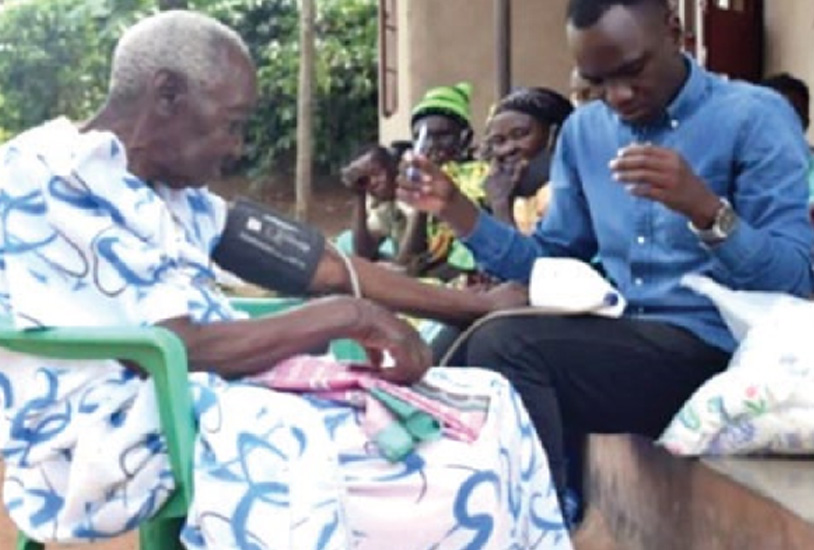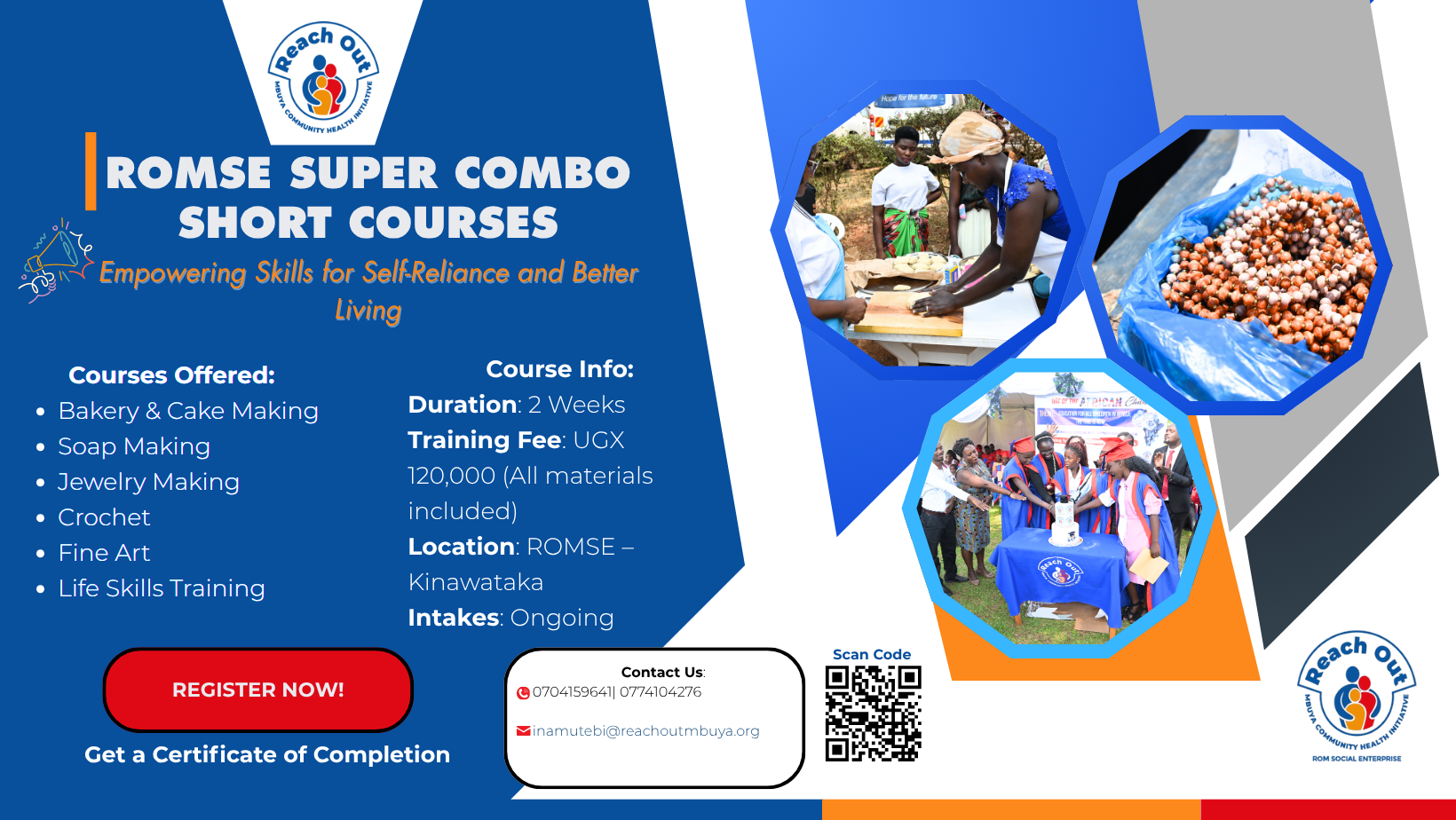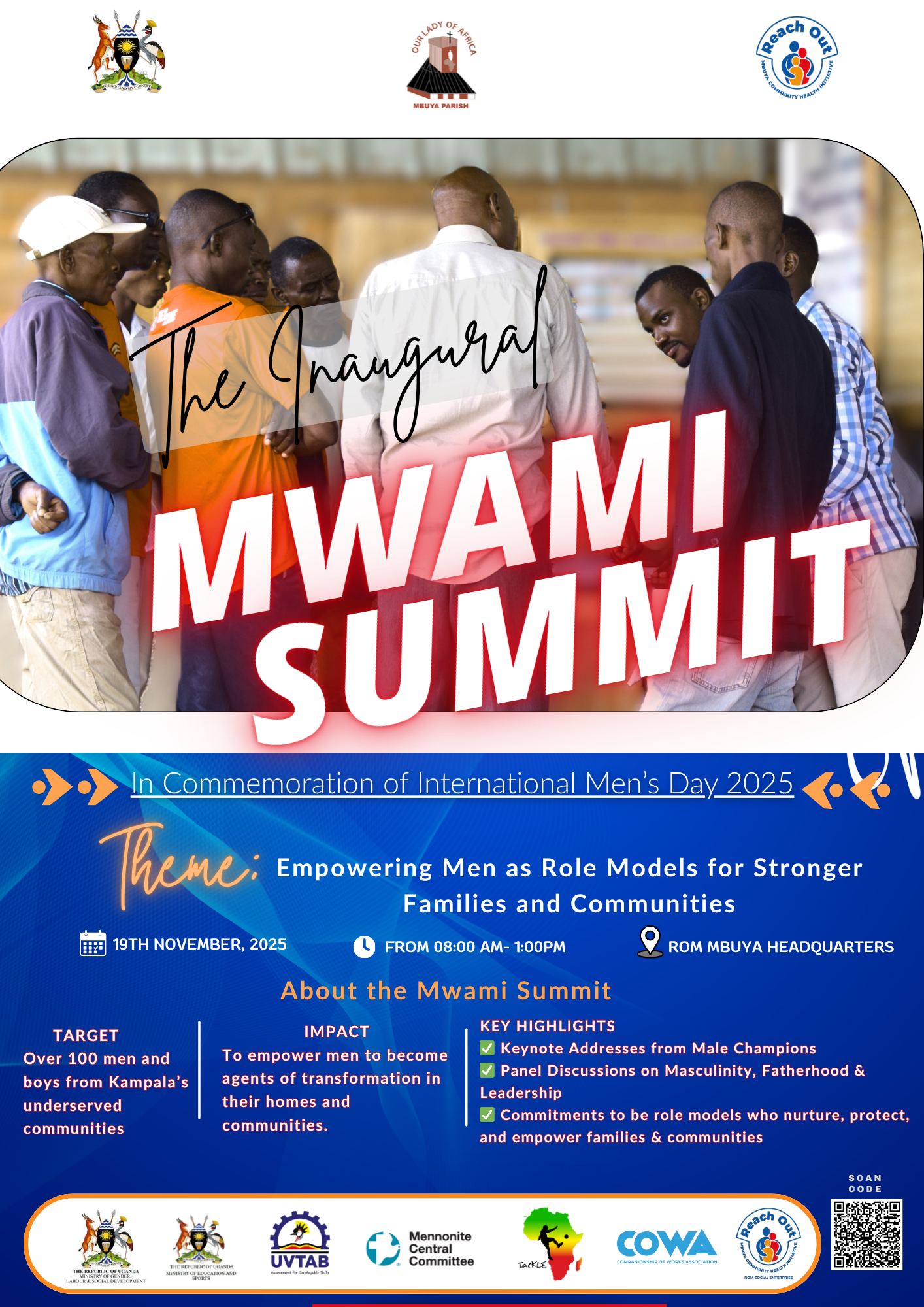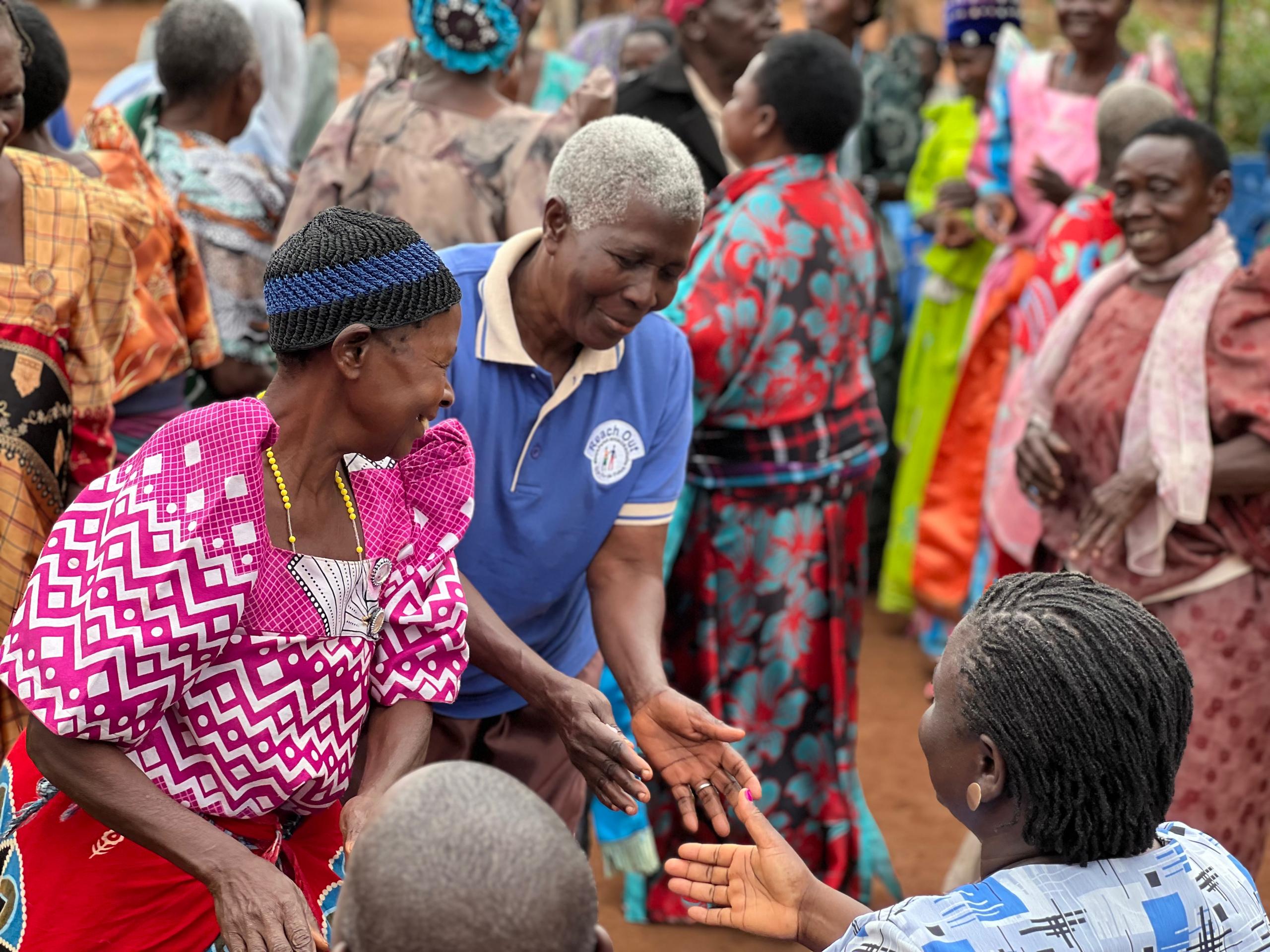Driving Innovation and Institutional Growth
At ROM, research has consistently been a cornerstone of our institutional growth. Over the years, we have prioritized evidence-based inquiry to guide our strategies, enhance our performance and remain adaptive in the face of evolving challenges, knowledge, and innovations. As a recognized center of excellence in community health, ROM continues to transform lives through research-driven solutions that respond directly to the needs of the communities we serve.
HIV CARE AND TREATMENT
Advanced HIV Disease (AHD) in Newly Diagnosed PLHIV:
Despite WHO strategies, 21% of newly diagnosed PLHIV in Nakawa Division present with AHD. We identified Key predictors including male gender, older age, marital status, and malnutrition. Early testing, male-friendly healthcare, and nutritional support are critical interventions.
Virologic Failure in HIV Treatment:
In a retrospective cohort of 756 participants (63.8% female, median age 39), virologic failure incidence was 4.24 per 1,000 person-months, with higher risk among those with viral loads >200 copies/mL at substitution. Longer PI duration and male sex were protective. Strengthening viral load monitoring and adherence support is crucial for sustaining HIV suppression and achieving the third “95.”
Treatment Interruption & Re-engagement
We retrospectively studied 84 young adults (20–24 years) in Kampala who interrupted ART from
2022 to 2024. The median RTTI was 38 days, with 59.5% returning within 31–90 days. Timely RTTI was linked to higher baseline CD4 counts (≥200 cells/µL), employment, and HIV status disclosure, while students faced the longest delays. Psychosocial support and economic empowerment are crucial for improving treatment re-engagement among young PLHIV.
Improving Viral Suppression in CLHIV (USAID OVC Kampala activity):
A longitudinal study on CLHIV identified lack of treatment supporters, forgetfulness, and food insecurity as key barriers to viral suppression. Targeted interventions, including enhanced case management and community-facility coordination, led to 95% (222/234) achieving suppression within seven months. Addressing psychosocial and economic challenges is crucial for improving
treatment outcomes.
Digital Tracking for CLHIV Treatment (The USAID OVC Kampala activity):
The electronic FACE Tracker, a real-time tool linking facility and community data, improved CLHIV case management, increasing timely viral load testing by 80%, appointment tracking by 98%, and re-engaging 23 children after treatment interruption. These findings highlight digital tools’ role in enhancing HIV care adherence and continuity
MATERNAL & CHILD HEALTH
Cervical Cancer in Women Living with HIV:
A retrospective cohort study revealed high cervical cancer positivity rates among Women Living with HIV (WLHIV) three years after a negative screen. Positivity was significantly higher among women screened at Kiswa than at Kisenyi and among younger women (19–29 years) compared to those aged 40–49. These findings underscore the need for regular rescreening and integrating cervical cancer screening into HIV care to reduce morbidity and mortality.
Syphilis in Pregnancy:
We found a 5.9% syphilis prevalence among 1,168 pregnant women at Kawaala HCIV. Syphilis was strongly associated with HIV positivity (aOR: 4.13), high blood pressure (aOR: 2.84), and previous pregnancies (aOR: 0.21). These findings highlight the need for routine syphilis screening in antenatal care to improve maternal and child health outcomes.
COMMUNITY-BASED HIV PREVENTION
HIV Recency Testing & Partner Notification:
In Kampala facilities, assisted partner notification (APN) for recent HIV cases yielded a higher positivity rate (17.3%) than the national average. A narrow partner age between partner and index client predicted positivity among the partners suggests peer-to-peer transmission, particularly among young people.
PrEP Uptake Among Adolescent Girls:
The study investigated low PrEP uptake among out-of-school adolescent girls (15-19) in Kampala, Uganda. Despite high-risk behaviours—irregular condom use (45.6%), multiple partners (10.4%), and transactional sex (32.0%)—only 2.9% initiated PrEP Barriers included pill size, stigma, and side effects. The study highlights the urgent need for youth-friendly PrEP formulations, stigma reduction strategies, and enhanced community engagement. Targeted education and healthcare provider support are
HIV Counselling Attendance in Nakawa:
A study at ROM clinics found that long waiting times, counsellor attitudes, and privacy concerns as hindrances to counselling attendance, while adherence support and mental health benefits encourage it. Clients recommended more counsellors and improved privacy to enhance uptake.
Intensified HIV Case Finding (Munonye Campaign):
The Munonye campaign demonstrated the effectiveness of intensified HIV case finding, boosting testing among children of female sex workers (FSWs) with a 0.9% positivity yield and 100% linkage to care. Reducing stigma, strengthening provider-FSW relationships, and scaling up stigma-sensitive strategies will support progress toward the 95-95-95 targets.
TUBERCULOSIS (TB) & HIV CO-MANAGEMENT
TB Treatment Interruptions:
In a cohort of 268 TB patients (2020–2023), 51.87% (139/268) experienced treatment interruptions. All 13 deaths and 4 lost to follow-up had interruptions. Risk factors included age >50 years (aOR 3.73) and PBC-TB or EPTB (aOR 10.19), while relapsed TB patients had lower interruption risk (aOR 0.27). Targeted interventions and adherence support are needed.
TB related mortality
A retrospective study of 150 TB patients at Butabika NRMH (2020–2023) found a 36.67% mortality rate, with death occurring a median of 27 days post-diagnosis. Mortality was strongly linked to advanced age (>50 years, aOR 16.88) and HIV positivity (aOR 3.57). Early detection targeting elderly and HIV-positive patients could reduce TB-related deaths in this vulnerable group
TB Case Detection & Contact Tracing:
ROM’s systematic TB screening at Butabika National Mental Referral Hospital improved TB case detection, tracing, and TB preventive Therapy initiation. Community engagement and flexible service models enhance screening effectiveness.
Evaluation of TB-LAM Testing in PLHIV:
We observed at a peri-urban HIV clinic in Kampala, 19% of 114 participants tested TB-LAM positive, with 64% having CD4 ≥ 200 cells/µL. Positivity was higher in females and those on ART for ≥13 months. Expanding TB-LAM testing beyond WHO guidelines could improve TB detection in asymptomatic PLHIV.
TB Prevalence & ART Duration in PLHIV:
A study at six Kampala health facilities analyzed TB prevalence among PLHIV based on ART duration and TPT completion. Among 1,587 TB/HIV co-infections, 62% developed TB over a year afterART initiation, with an average TB diagnosis occurring five years afterART start and 2.5 years after TPT completion. Despite ART and TPT, the high TB burden suggests a need for improved TB screening, potential booster TPT doses, and further exploration of socio-demographic risk factors.
TB After TPT Completion:
This study examined PLHIV who developed TB after completing TPT at Kawaala Health Centre IV in Kampala, between January 2022 and December 2023. About 0.9% (87/9417) PLHIV who completed TPT, contracted TB, within an average of 2.5 years following TPT completion. Most were female (53%), Dolutegravir-based regimens (92%), were virologically suppressed (79%). The study emphasizes the need for routine TB screening, even among stable PLHIV in community and facility-based care programs.
TB Treatment Loss to Follow-Up:
A retrospective review of TB treatment records at Kawaala Health Centre III showed higher loss to follow-up among patients referred from facilities (aOR 2.86), without a cell phone (aOR 2.97), and those previously lost to follow-up (TL) compared to new patients (aOR 1.78). These findings highlight the need to focus on TL and improve coordination between healthcare facilities and community services to reduce attrition and enhance treatment outcomes.
HIV & VULNERABLE POPULATIONS
HIV among Older Women:
A study in rural Uganda found that 9.5% of vulnerable older women (≥50 years) were HIV-positive, surpassing the national average of 5.3%. Women aged 50-59 and those in severe economic hardship were at highest risk. Despite good HIV awareness, many faced poverty, limited resources, and social support. The findings highlight the need for targeted HIV prevention policies addressing the socioeconomic and behavioral factors driving vulnerability in this group.




